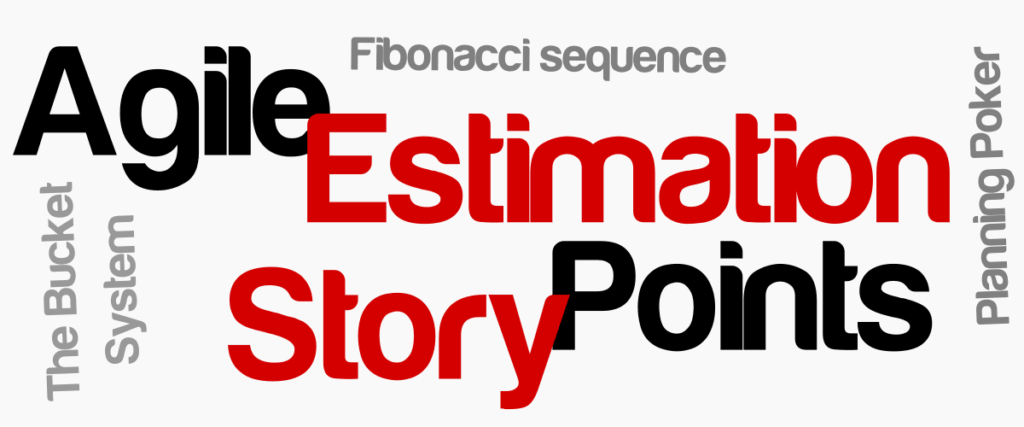
Agile Estimation is the process of finding an approximation level of effort, which is a value that is usable for few purpose even if input data may be incomplete, uncertain, or unstable. Traditional waterfall method uses bottom up approach with the smallest tasks at the bottom. But agile uses two estimation techniques,Top-Down Estimation and Relative Sizing. It employs progressive elaboration and rolling-wave planning methods to drill down to the task level on a just-in-time basis, iteratively uncovering more and more detail each level down.
Relative Estimation is one of the several distinct flavors of estimation used in Agile teams, and consists of estimating tasks or user stories, not separately and in absolute units of time, but by comparison or by grouping of items of equivalent difficulty.
Agile Estimation Techniques
Planning Poker
Planning Poker is a consensus-based technique for estimation, mostly used to estimate effort or relative size of development goals in software product development. Planning Poker is done with story points, ideal days, or any other estimating units. The Scrum Master, Product Owner, and the development team participate in Planning Poker activity.
This technique is not good for large teams, or when there are a large number of items that need estimating. If you only have a selected number of items (between 2 and 10) and a small band of teammates, then this is a good technique to use. It’s also one of the most popular estimation techniques.
More Details: Planning Poker
Bucket System
Bucket System Estimation technique is used when there is a very large numbers of items to be estimated with a medium to big sized group of people, and to do it quickly. This approach provides a consistent way for teams to size stories by discussing each story in terms of pre-defined buckets of complexity before deciding on the final points. Benefits of Bucket System Estimation are Fast, Collaborative, Relative Estimate, Group Accountability & Works with teams to estimate effort or with stakeholders to estimate value.
Bucket System is a good alternative to Planning Poker as it is time efficient and provides reasonable results.It is a great agile estimation technique to use if you have a large number of items and a big team.
More Details: Bucket System
Dot Voting
Dot voting is usually considered a decision-making tool, not an agile estimation technique. For example Dot Voting is preferred to select the most important 2-3 items during sprint retrospective. It’s a simple and effective way to prioritize or indicate the value of several small items quickly. When there is a relatively small set of items and you don’t want any complex techniques, In this method each team member gets a small number of dots in the form of stickers and uses them as votes to indicate the size and importance of an item. The more votes an item gets, the bigger its size, and the higher its priority.
Dot Voting is a good alternative to Planning Poker or Bucket System as it’s a simple and effective way to prioritize or indicate the value of several small items quickly.
More Details: Dot Voting
Affinity Estimation
Affinity Estimation is a technique many agile teams use too quickly and easily estimate a large number of user stories in story points. Other estimation methods like Planning Poker or Bucket System are effective methods of establishing consensus in small projects. Affinity Estimation is a great technique if a project has just started, and have a backlog that hasn’t been estimated yet, or in preparation for release planning. It is useful when the team is small and the number of participants is less as well.
Characteristics of agile affinity estimation are Quick and Easy, Make decision fairly transparent and visible & Create a positive and collaborative experience.
More Details: Affinity Estimation
White Elephant Sizing
Agile teams need to estimate the size of their stories or product backlog items. The goal of the White Elephant Game is to get a quick estimate of the relative size of an agile project and the size of the individual stories before the project starts. It gives opportunity to everyone for their voices are heard, and everyone contributes equally. Estimation is a key component of project realization. It projects the cost for Stakeholders, duration of the project for Product Owners, size or complexity for the developer. The white elephant game attempts to do this in a way that can be reliably fit into a given amount of time and keeps the focus on getting the overall estimation done rather than disagreements on the sizing of particular stories.There are significant difference between White Elephant Sizing Game and Planing Poker, so evaluate which one is better for your team.
This game helps the team to estimate faster. The fact that one story at a time is introduced helps limit the amount of uncertainty. So it should also help the team feel more confident in completing their estimation work in a set period of time.
More Details: White Elephant Sizing
Summary
The main principles behind Agile Estimation are: use a relative estimation, allow discussion to derive more information about the items, create shared understanding of the solution and respect about the solutions, create team commitment on the work agreed upon and strengthen team relationship by collaborating. All estimations are done in relative units preferably story points .
